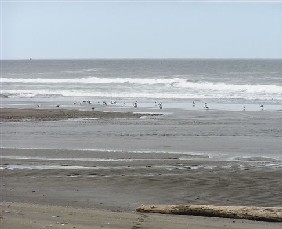Explore sandy beaches and dunes: observe and question, predict and test, classify and categorize, explore and imagine! Learn about tides and waves, and how beaches form and change. Explore how sand is made and where it comes from, and then examine different sand and learn how the materials, colors, grain sizes and grain shapes tell the story of the beach. Learn about animals that live on and in the sand, and about shells and who makes them. Study beach hoppers, hermit crabs, shorebirds, seals and sea lions. Where do people fit in? Learn about threats to our beaches and how we can care for these amazing places.
MARE lessons (Teacher’s Guide to the Sandy Beach and GEMS/MARE On Sandy Shores)
Beach Bucket Scavenger Hunt Shell Sorting
Making Sand Build a Sandy Beach
Sand on Stage Chain of Life
The Sights Sand Has Seen Oil on the Beach
Pinnipeds – Ears to You
Lessons
Hermit Crab Experiments*
*first publication occurred in Science Activities, Classroom Projects and Curriculum Ideas, 46(3)
Beach Hopper Biology and Jumping Experiments
Jellies and other Cnidarians, PPT
Field Inquiry: Beach Hoppers
 This material is based upon work supported by the National Science Foundation under Grant Nos. 0338153 and 0638731. Any opinions, findings, and conclusions or recommendations expressed in this material are those of the author(s) and do not necessarily reflect the views of the National Science Foundation.
This material is based upon work supported by the National Science Foundation under Grant Nos. 0338153 and 0638731. Any opinions, findings, and conclusions or recommendations expressed in this material are those of the author(s) and do not necessarily reflect the views of the National Science Foundation.

